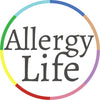Hypersensitivity type may be- Type I Allergy
Immune reactions may be from- IgE
Reactions may occur in- Minutes
A Wheat Allergy is when there is an immune response from consuming, contact or inhaling substances containing the proteins found in Wheat.
A Wheat Allergy is also sometimes incorrectly referred to as a 'Gluten Allergy'. There is no such term as a 'Gluten Allergy', there is either a Wheat Allergy or if not an allergy- a Gluten Intolerance or Coeliac Disease.
If an item that is made from wheat starch is labelled 'Gluten Free', this does not mean it is Wheat Free and safe for a person with a Wheat Allergy.
Gluten Free means that it is only free of the proteins that makes up Gluten, however, the proteins that cause a reaction from Wheat may still present, it may still cause a reaction for people with a Wheat Allergy.
People with a Wheat Allergy may also have reactions to non-wheat sources such as Rye, Barley and Oats, that also may contain Gluten (Scroll below to see some places it can be found).
WHEAT is part of the 10 most common food allergens in Australia, that all together account for 90% of food allergies.

SYMPTOMS
Some of the symptoms may be characterised by:
- Nasal congestion
- Headache
- Difficulty breathing
- Diarrhoea
- Hives and/or itchy rashes
- Itchy, watery, red eyes
- Cramps, nausea or vomiting
- Asthma Aggravation
- ANAPHYLAXIS
The validity and severity of these symptoms are dependent on the individual and the level of exposure, as determined by a qualified health care provider.
TREATMENT
If you experience or are in the presence of someone who encounters a serious reaction (this may include difficulty breathing, wheezing, throat tightening, swelling, collapse, etc), follow their action plan or emergency instructions and call or have someone call Triple Zero (000) immediately.
Adrenaline (Epinephrine) is the first-line treatment for Anaphylaxis. After administering Adrenaline (Epinephrine), seek emergency medical attention by calling Triple Zero (000) for an ambulance.
If you are unsure what to do, call Triple Zero (000).
If you or someone you know is suspected of having an allergy, it’s important to discuss diagnosis, symptoms and treatment with a qualified health care provider to understand how to manage individual allergies and also to set up an Allergy Action Plan in the case of a reaction.
Always present your Allergy Card, Medical Alert Bracelet, Action Plan or Necklace to ensure health care providers, family members, friends, colleagues and others are aware of your Allergies.
TESTING
A skin test, blood test or food challenge may be used to test for a Wheat Allergy.
LABELLING
Some labels or terms you may come across on Wheat Allergy friendly products:
"Wheat Free" "Wheat Alternatives"

RANDOM ALLERGY FACT
Wheat's origin can be traced back to the Middle East, and has been cultivated for a thousands of years worldwide.
WHERE YOU MAY COME ACROSS WHEAT
The below is not a complete list, but just some of the places you may come across Wheat:
- Breakfast cereals
- Biscuits
- Crackers
- Crumpets
- Scones
- Pancakes
- Wafers
- Breads
- Chapattis
- Naan breads
- Cakes
- Pizza
- Pasta
- Pastries
- Yorkshire puddings
- Beverages
- Sauces
The information provided on Allergy Life Australia is to generally educate and inform you about living with allergies, intolerances and conditions, and is not intended as medical instruction or as a substitute for diagnosis, examination and advice by a qualified health care provider.




